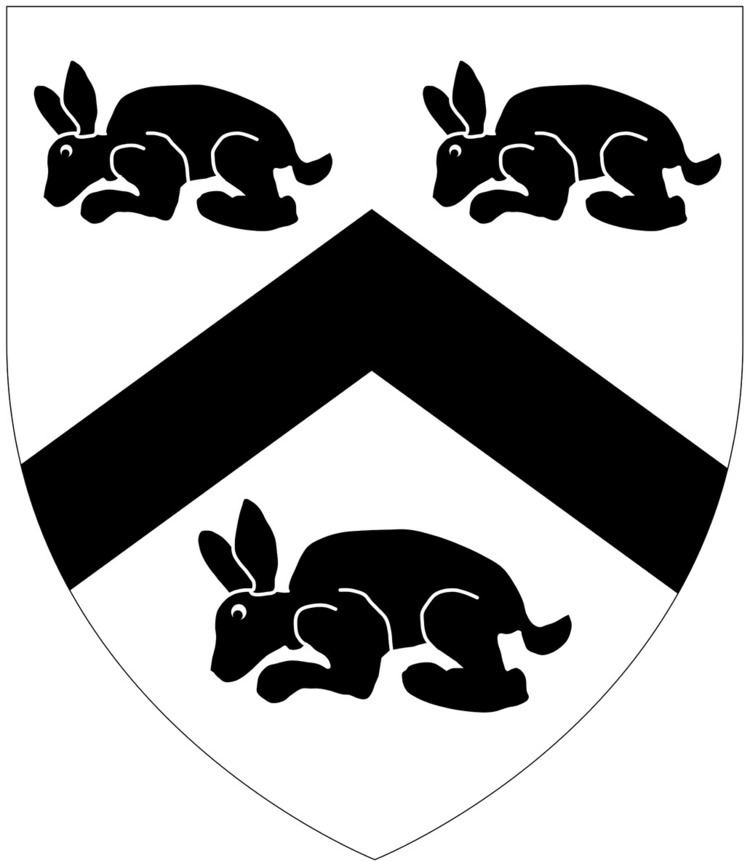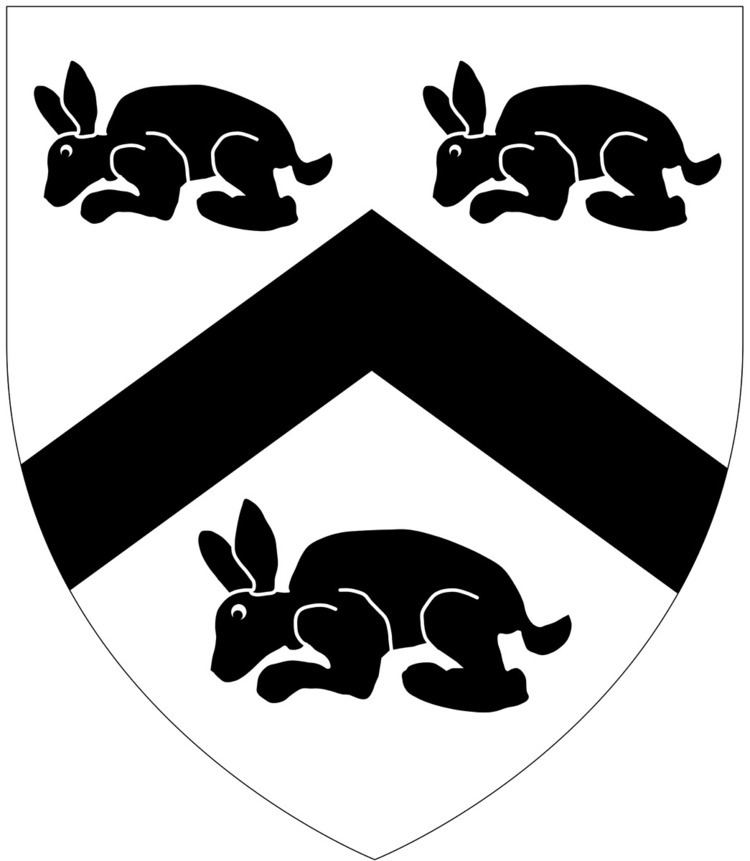Name William Strode Died 1637 | Role 1562–1637 Children William Strode | |
 | ||
Sir William Strode (1562–1637) of Newnham in the parish of Plympton St Mary, Devon, England, was a member of the Devon landed gentry, a military engineer and seven times a Member of Parliament elected for Devon in 1597 and 1624, for Plympton Erle in 1601, 1604, 1621 and 1625, and for Plymouth in 1614. He was High Sheriff of Devon from 1593 to 1594 and was knighted in 1598. In 1599 he was appointed Deputy Lieutenant of Devon. His monument with effigy exists in Plympton St Mary Church.
Contents
Origins

Strode was the eldest son of Richard Strode (died 1581) of Newnham, Plympton St Mary, by his wife Frances Cromwell, first cousin of King Edward VI (1547–1553). Frances was a daughter of Gregory Cromwell, 1st Baron Cromwell (c. 1520 - 1551) (only son of Thomas Cromwell, 1st Earl of Essex (c. 1485 – 1540), chief minister of King Henry VIII) by his wife Elizabeth Seymour, sister of Queen Jane Seymour and sister of Edward Seymour, 1st Duke of Somerset (c. 1500 - 1552) uncle and Lord Protector of King Edward VI.
Career
He entered Inner Temple in 1580. In 1581, he succeeded to the estates of his father.
At the time of the Spanish Armada (1588) he became a colonel of the stannary of Plympton, in command of one hundred men. He was a JP for Devon from about 1592. In 1593 he came into possession of the family tin-mining interests which were previously managed by his uncle, Philip Strode and was appointed High Sheriff of Devon for 1593-94. In 1595 he was in charge of construction works on Plymouth fort. He was a close friend of Admiral Sir Francis Drake (died 1596) and was one of the executors of Drake’s will.
In 1597, Strode was elected Member of Parliament for Devon. He was appointed surveyor of the house and castle of Templeton, Devon for life. In 1599 he became Deputy Lieutenant. He was elected MP for Plympton Erle in 1601 and was re-elected for the seat in 1604. In 1606 he was appointed surveyor of Devon for life. He was re-elected MP for Plympton Erle in 1614 and in 1621. In 1624, he was elected MP for Devon. He was elected MP for Plympton Erle again in 1625 and 1626.
Marriages and progeny
Strode married twice:
First marriage
Firstly in 1581 he married Mary Southcote (died 1618) daughter of Thomas Southcote (died 1600), MP, of Bovey Tracey, by whom he had three sons and seven daughters:
Sons
Sir Richard Strode (died 1669)
Sir Richard Strode (1584–1669), MP, eldest son and heir.
William Strode (1594-1645)
William Strode (1594–1645), MP, 2nd son, one of the Five Members whose attempted arrest in the House of Commons of England by King Charles I in 1642 sparked the Civil War.
John Strode of Tavistock
John Strode, 3rd son, of Tavistock, who died at some time after 1644.
Daughters
Mary Strode (born 1586)
Mary Strode (born 1586), eldest daughter, married Sir George Chudleigh, 1st Baronet (1582–1656), of Atherington. She predeceased her husband and was buried in Ashton Church.
Joanna Strode
Joanna Strode, 2nd daughter, married in 1615 as his 2nd wife, Sir Francis Drake, 1st Baronet (1588 - c. 1637), of Buckland, nephew of his namesake the great Admiral. She married secondly in 1639 at Bere Ferrers (or Buckland Monachorum) to John Trefusis of Milor (or of Trefusis), Cornwall.
Ursula Strode (died 1635)
Ursula Strode (died 1635), his 3rd daughter, married Sir John III Chichester (1598–1669), MP, of Hall, Bishop's Tawton. Her mural monument exists in Bishops Tawton Church, showing her effigy kneeling at a prie dieu with two babies side-by-side wrapped in swaddling clothes in front of her. At the top within an elaborate gilded frame within a broken pediment is a lozenge showing the arms of Strode. On the arch above her is shown on the dexter the arms of Chichester and on the sinister the arms of Strode. Below underneath an inscribed tablet is a cartouche bearing the arms of Chichester impaling Strode. The tablet is inscribed as follows:
To the memorie of the truly vertuous and religious the Lady Ursula Chichester daughter to Sr. William Strode of Newingeam, Knight, and wife to Sr. John Chichester of Hall, Knight, by whome she had issue seven sonnes and two daughters whereof survive fower sonnes, two sonnes & one daught. heere buried. She departed this life in the true faith of Christ Jesus and was heere enterred the 6th (5th?) day of July Anno D(omi)ni 1635 aetat(is) suae (47?).
Fayre virtuous sainct injoy thy peacefull sleepe,
While wee that live employ our foes to weepe,
But when thou wak'st let glory shew thy grace,
Let Heav'n, which only can, enrich thy face.
Frances Strode
Frances Strode, 4th daughter, married in 1606/7 Sir Samuel Somaster, Knight (born 1692), of Painsford, Ashprington.
Juliana Strode
Juliana Strode (d.1627), his 5th daughter married Sir John Davie, 1st Baronet (died 1654), of Creedy, Sandford, near Crediton, Devon. A mural monument to her survives in Sandford Church, inscribed in verse as follows:
Margaret Strode
Margaret Strode, 6th daughter, married Sir John Younge of Stetscome.
Elizabeth Strode
Elizabeth Strode, 7th daughter, married Edmond Speccot (died 1620) of Anderdon, Cornwall, 2nd son of Humphrey Speccot, MP, of Speccot, Devon.
Second marriage
Secondly in 1624 he married (as her 3rd husband) Dunes (or Dewnes, Latinised to Dyonisia, perhaps the modern "Denise") Glanville (died 1635) daughter of Nicholas Glanville, who was brother to Sir Sir John Glanville (1542–1600), of Kilworthy, Tavistock, Devon, Member of Parliament and a judge. The marriage was without issue.
Residences
As well as Newnham, Strode also had a residence at Meavy, about 6 miles to the north, which was later the residence of his 2nd son William Strode (1594–1645), MP. His great-grandfather Richard IV Strode (died 1552) had married Agnes Milliton, daughter of John Milliton of Meavy.
Death and burial
Strode died in 1637 and was buried in the church of St Mary's Plympton, where exists his monument. His will was proved in February 1639.
Monument
On the north wall of the Strode Chapel in the church of St Mary's Plympton, is the monument of Sir William Strode (died 1637). In the centre kneels his effigy in armour with hand on sword. On either side of him are female effigies kneeling each at a prie dieu, to the left his first wife Mary Southcott, who died in 1617, and to the right Dunes (Dewnes or Dyonisia) the second Lady Strode. On a panel beneath Mary Southcott are low-relief sculpted figures of her seven daughters and three sons. Underneath the effigy of Dunes is a representation of Death cutting with his sickle a flower then grasped by the hand of God appearing out of a cloud above. Beneath the effigy of Sir William is the following Latin inscription:
Cubiculum Guilielmi Strode, Equitis Aurati et in isto ordine tandem antiquisimi: Familia satis clari Sed Religione integritate morum consilio Justica Publica Generosa hospitalitate rebus probe et faeliciter gestis longe clarioris Qui et septem filiarum (quinq: nuptarum Equitibus...)?... nexu lugali Et arctiori nexu plurium virtutum Devoniæ suae gluten, et Oraculum diu substitit Is duarum uxorum unanimi fretus consortio, Mariæ ac Dionysiæ Quarum ex altera decem suscepit liberos ex altera senii solamen dierum et operum satur obdormivit In gremio Terre Matris cum sorore vermicula, et ultima propinquitate nature decumbens conquerentibus amicis IN TE OCCIDIT SPES OMNES ET FORTUNA NOSTRI NOMINIS donec nominis generisq: discrimen Communi gloria Resurrectionis et solius affinitate Christi evanescat. Occidit Junii 27, 1637 aetat(is) suæ 76. Patri Guilielmo, matri Mariæ et Dionysiæ quasi matri Monumentum hoc posuit Guilielmus Strode ("The resting place of William Strode at length in this order of the most ancient Golden Knight. In his familial ancestry famous enough, but in religion, integrity, morals, counsel, justice, public works, hospitality, in business matters honestly and well managed, more famous by far. Who and of 7 daughters (of whom 5 were married to knights)...He long stood firm as the glue and oracle of his Devon. He, strengthened by the unanimous fellowship of two wives of one mind, Mary and Dionise, of whom from the one he received 10 children, from the other the comfort of his old age, sated with days and good works fell asleep, in a groan of Mother Earth, with his playmates the worms in a last closeness with nature, lying down with his friends bewailing. IN THEE DIED ALL HOPE AND FORTUNE OF OUR NAME until an interval of our family and name. He passed away in the glory of the Common Resurrection and in affinity of Christ. He died on the 27th of June 1637, of his age 76. To his father William, to his mother Mary and to Dionise, virtually a mother to him, William Strode placed this monument".)
Above the effigy of Sir William is the following inscription in verse:
"Treade soft for if you wake this knight alone,
You rayse an hoast, Religion's champion,
His country's staff, Right's bold distributer,
His neighbour's guard, the poore man's almoner.
Who dies with workes about him, as did hee,
Shall rise attended most triumphantlie"
Above the effigy of Mary Southcott (left) is the following inscription in verse:
"Mary incarnate vertue, soule and skin
Both pure, whom death, not life, convinced of sin,
Had daughters like seaven Pleiades but shee,
Was a prime star of greatest claritie"
Above the effigy of Dunes (right) is the following inscription in verse:
"Dewnes hath merited no slender prayse,
In that shee well supplyd the former's dayes,
Conceave how good shee was whose very worst,
Unto her knight was this, that shee died first"
Heraldic quarterings
An escutcheon on top of the monument to Sir William Strode shows the following eight quarterings:
